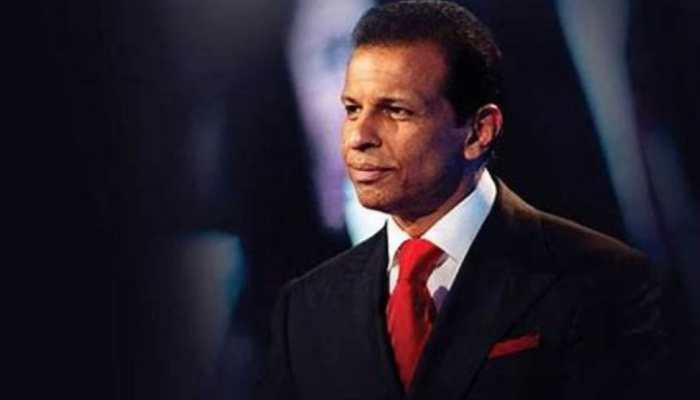Fake modern Indian art market fattens on budget buyers
The underground copy market has turned its attention to India`s top contemporary sculptor and artist Satish Gujral.
Trending Photos
)
New Delhi: After faking art works of contemporary Indian masters like S.H. Raza and F.N. Souza, the underground copy market has turned its attention to India`s top contemporary sculptor and artist Satish Gujral to tap the budget segment of collectors.
A consignment of crude bronze sculptures of a "stylised figure of a two-headed ram with horns" and "abstract human figures" ostensibly sculpted by Gujral has reached galleries in Kolkata from the national capital for sale.
The sculptures are priced around Rs 200,000 (about $3,500).
"A New Delhi-based dealer offered to sell at least 10 Satish Gujral sculptures to me this month. I was suspicious because I had the original sculpture of the two-headed horned ram in my gallery. The sculptures sent from the national capital were crude replicas of the original. They were not even limited edition replicas," a Kolkata-based gallerist told IANS, declining to be named.
The gallerist said he had purchased the "original from the sculptor for Rs 700,000 a few years ago".
"Fakes are rampant in the art market, but the fact that such crude copies were being offered to leading galleries in such a blatant manner is a cause for concern. Some galleries let it through to tap the second-rung buyers with the new boom in private collections," the gallerist said.
The sculpture of the two-headed ram on sale was different in its sculpted form from the original with two folded forelimbs instead of the one (in the original) and careless craftsmanship. It was tilted at an angle and "was photographed against a white cloth as background".
Satish Gujral was not available for comment.
Master artists from the 20th century Bengal school of art drive the market for fakes in Kolkata. They often find their way abroad. In March, artists in Kolkata assembled under the banner of the Kolkata Art Forum to protest fakes of Rabindranath Tagore`s art, 20 of which were displayed at the Government College of Art & Craft.
Till a few years ago, Bengal master Jamini Roy was a popular muse of the copy artists in the metropolis who pushed his fakes across the country. "It was easy to fake Jamini Roy because the painter had taught his son to copy his art and make natural pigments. Roy`s son in turn instructed several young artists in the Jamini Roy school of art.
It later led to several Jamini Roy fakes in the international market," the gallerist explained.
The Delhi-based Dhoomimal Gallery had to withdraw more than a dozen canvases from a solo exhibition of artist S.H. Raza`s art in 2009. The mystery of the fake paintings have not been solved yet, but the gallery has lost "much of its credibility after the fiasco" with the artist threatening to sue the "donor" who gave bulk of the exhibits to the gallery, said a source in the capital`s art world.
Fake works of art are not new to India and are "known in Europe and America where the industry has grown with the boom in demand for art," says Manish Pushkale, a leading contemporary multi-media artist.
"There are no legal guidelines in relation to faking and forging Indian contemporary and modern art because the genres are not recognised as national heritage. Legal guidelines, however, are well-defined for someone who is faking Indian miniatures. The Archaeological Survey of India (ASI) and the law enforcing agencies can act against the forgers of miniatures and antiquities. Modern artists were not recognised as heritage artists," Pushkale told IANS.
He said saleable artists like S.H. Raza, F.N. Souza and M.F. Husain were faked at random in the market. The second-rung artists were not in demand and "hence did not run the risk of being faked".
Pushkale said "there was a problem in the country`s cultural policy" which required to address the loopholes in the trade and exhibition of modern and contemporary art. "Modern art must be given national heritage status to curb the trade in fake art with legal action," he said.
A capital-based art market analyst, refusing to be named, said "the status of fake modern art was subject to debate".
A parallel industry in reproduction art flourishes with the help of hundreds of copy artists - mostly young art school graduates - who eke out a living by copying masters for the lower end of the market.
India, on an average, produces 5,000 art graduates annually from various art schools.
Difficult to estimate, the size of the fake art market in India has grown phenomenally to at least three times the size of the original market - estimated at over $400 million - in the last decade, said art dealer, promoter and gallerist Narendra Jain.
"The phantom (unrealistic) prices of top artists have led to the boom in the fake art trade. Even people with money often opt for fakes of leading contemporary masters like Husain, Souza and Raza to avoid rash investment in originals. For a lay viewer, a fake Husain in the home of the well-heeled collector appears real because the owner has money," Jain told IANS.
Fake works of masters have often been known to put international auction houses on the backfoot.
Russian billionaire Viktor Vekselberg last week won a lawsuit against Christie`s for selling him a fake artwork of a nude by Russian artist Boris Kustodiev for 1.7 million pounds ($2.6 million) during the art market boom in 2005, the British media reported.
Christie`s will have to repay Vekselberg the money.
IANS
Stay informed on all the latest news, real-time breaking news updates, and follow all the important headlines in india news and world News on Zee News.
Advertisement
Live Tv
Advertisement







)
)
)
)
)
)
)
)
)
)
